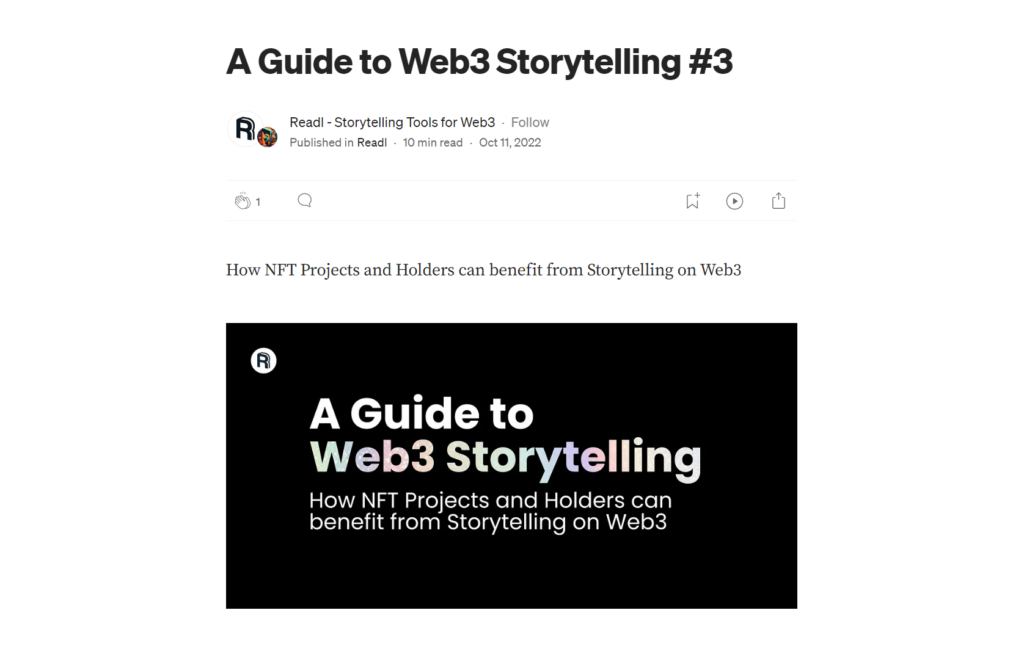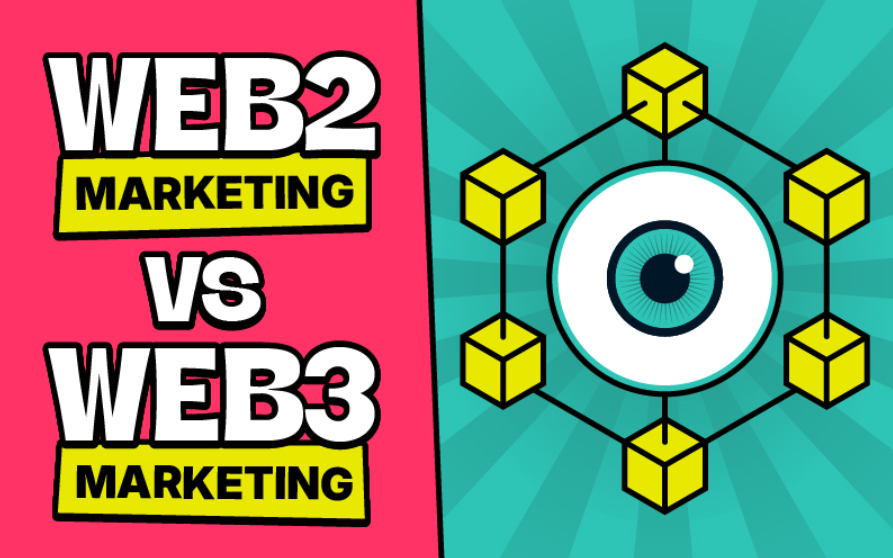
The Next Episode — Dr. Dre
Imagine watching a thrilling series where each episode ends with a cliffhanger. You can’t wait to see what happens next, so you keep watching. This is the kind of excitement we aim to create in Web3 projects. Today, we’ll explore a fun strategy called Horizon Stacking. This method helps turn short-term hype into a lasting commitment to your project. By mastering this approach, you can keep your community engaged and eager for more.
In web3 marketing and crypto marketing, attention spans are short. Participants often jump from one project to another, looking for the next big thing. That’s where Horizon Stacking comes into play. This strategy helps you maintain engagement, arouse curiosity, and generate anticipation among your community. By stacking horizons, you can turn casual observers into committed supporters.
This article is inspired by the insights from the book Token Titans by Tugan Bara. If you’d like to explore these strategies in depth, you can grab your copy: Token Titans : The Secret Playbook for Building New Web3 Experiences, NFT Communities, and DeFi Protocols
Mastering web3 Marketing: Retaining communities through Narrative and Vision
In Web3 projects, effective community and project management involve handling incentives and expectations. It’s like producing a captivating series on a streaming platform. After each episode, viewers should feel a strong desire to continue watching. While they might have an idea of what could happen next, the anticipation of seeing it unfold keeps them engaged.
Retaining participants and their daily presence signifies momentum. The present relies on the future being projected and the community’s vision. People take action today based on what they see on the horizon. Therefore, controlling what lies on their horizon is crucial. Mastering the narrative surrounding your project is essential for success in web3 marketing.
Introducing Klaus Schwab and his method
Klaus Schwab is the founder and executive chairman of the World Economic Forum (WEF). Born in 1938 in Germany, he established the WEF in 1971. The organization is known for its annual meetings in Davos, Switzerland, where world leaders discuss global issues. Klaus Schwab has been influential in shaping economic and political agendas worldwide. His work has often been seen as steering global narratives.
You might wonder how running a global organization relates to managing a Web3 project. The connection lies in handling large groups of people and controlling narratives. In both cases, you’re dealing with an audience whose actions and behaviors can be unpredictable.
There are narratives you control and narratives you don’t control. Managing a crowd requires narrative control. You must steer the topics of debate, capture attention, and focus the discussion. Don’t let the crowd decide alone. While this may sound a bit manipulative, it’s about guiding the community towards a shared vision.

source: https://medium.com/readl-web3-storytelling/a-guide-to-web3-storytelling-3-434ea3e49e76
Crafting controlled narratives for successful Web3 and crypto marketing
Let’s consider two examples to illustrate this point:
Example 1: “We will reach $10 million in market cap by this date.” Unless you personally have millions to invest, you cannot control this narrative. If the community fails to achieve this goal, it may lead to fear, uncertainty, and doubt (FUD).
Example 2: “We will conduct a $50,000 airdrop next Friday for token holders with more than 1,000 tokens.” This narrative is within your control. You can determine the date and the criteria for eligibility, and you can ensure the airdrop happens.
The second example is the kind of small narrative you want to communicate. You control it. It’s not random or dependent on forces outside your control. People will have a sense of clarity and trust because you deliver what you promise. This approach builds confidence in your project.
This is precisely what the World Economic Forum, politicians, and figures like Klaus Schwab are doing. They manage expectations by controlling the narrative.
Horizon Stacking: A key strategy for sustaining Web3 engagement and crypto community growth
Horizon Stacking is a strategy for maintaining engagement, arousing curiosity, and generating anticipation. It involves stacking short-term horizons on top of each other, with a mid-term horizon in place, while quietly advancing the long-term horizon in the background.
The key is to have short-term, mid-term, and long-term narratives in place at all times. The seriousness of the project determines the length of these horizons. In mature and technologically advanced projects, the time horizon tends to be longer. Users seek stability in such cases. Conversely, projects driven by excitement and hype attract a more short-term focus. Users here crave immediate stimulation.
Crucially, the community should be fully aware of project developments, upcoming events, and ongoing construction. This transparency keeps them engaged and excited. It provides them with a compelling reason to remain involved and hold the token. It’s a clear signal that significant developments are on the horizon, ensuring their continued commitment.
The psychology behind Horizon Stacking
Horizon Stacking leverages psychological principles related to motivation and engagement. The anticipation of future rewards motivates people to stay involved. By providing clear milestones and delivering on promises, you reinforce positive behavior.
Moreover, people are more likely to remain committed when they see progress. Regular updates and achievements give participants a sense of momentum. This is especially important in the fast-moving Web3 space, where projects can quickly become obsolete.
The Zappos Secret Hack and How to adapt it to crypto marketing
In his bestselling book The Personal MBA, Josh Kaufman introduces the concept of the “anticipation effect.” He explains that a customer’s perception of quality relies on expectations and performance. If performance exceeds expectations, the customer is delighted.
Zappos, an online shoe retailer founded in 1999 by Nick Swinmurn and Tony Hsieh, used this principle to their advantage. The company promised standard shipping times but often delivered products several days early. Customers were pleasantly surprised, which built loyalty and positive word-of-mouth.
Applying this strategy to a Web3 project involves providing a buffer in your timeline. For example, you might announce that a new feature will be available in 20 days, even though it will only take 10 days to develop. If everything goes as planned, you’ll exceed expectations by delivering early. If there are delays, you still have time to meet the deadline.
This approach creates a win-win situation. The community is delighted when you overdeliver, and your team has a buffer to handle unexpected challenges.
Managing expectations with a flexible roadmap
In Web3, a paradox emerges when it comes to roadmaps. Many token holders desire a detailed plan for the months or even years ahead. Yet, they often disengage from the project long before any substantial progress is made.
Traditionally, projects would outline their roadmap on their website or whitepaper, essentially making commitments to what they intend to build. This approach has its pitfalls:
- Inflexibility: A rigid roadmap can hinder a project’s ability to pivot. Any deviation from the stated plan may be perceived as a breach of promise.
- Legal Risks: Roadmaps can be used against project developers in legal proceedings if they fail to deliver on what was “promised.”
The Web3 environment is dynamic. Technologies evolve, market preferences change, and project needs shift over time. A more adaptive approach, such as the Horizon Stacking method, provides a solution. It combines clarity and flexibility, allowing projects to innovate and adjust until they find a product-market fit.
You can feature this flexible roadmap on your website, a blog post, or a big announcement in Discord.
The importance of community engagement
Community engagement is at the heart of any successful Web3 project. Participants need to feel connected to the project’s vision and believe that their involvement makes a difference. By controlling the narrative and managing expectations, you create a sense of trust and loyalty.
Regular updates, transparent communication, and delivering on promises are key. The Horizon Stacking method provides a framework for achieving this. It allows you to keep the community informed and excited about upcoming developments.
To further strengthen its community, the project could benefit from a tool like side.xyz with Rise. Rise transforms passive followers into active ambassadors by encouraging deeper engagement.
Building trust through delivery
Trust is earned by consistently delivering on your promises. When the community sees that you follow through on your commitments, confidence in the project grows. This trust encourages participants to stay involved and even attract new members.
Using the Zappos Secret Hack, you can exceed expectations and delight your community. This positive experience fosters loyalty and promotes word-of-mouth marketing, which is invaluable in the Web3 space.
Working with Web3 influencers and KOLs
Collaborating with Web3 influencers and Web3 KOLs can amplify your project’s reach. Builders like Tugan, known for his expertise in web3 influencer marketing, have large audiences that trust their opinions.
When selecting influencers, consider their alignment with your project’s values and goals. Authentic partnerships are more effective and resonate better with audiences.
The importance of community platforms
Platforms like Discord, Telegram, and Twitter are essential for community engagement. Regular communication through these channels keeps participants informed and involved.
Hosting events, AMAs (Ask Me Anything sessions), and discussions on these platforms fosters a sense of community. It also provides valuable feedback that can guide your project’s development.
Measuring success
To evaluate the effectiveness of Horizon Stacking, establish key performance indicators (KPIs). These could include:
🧱 Community Growth: Track the number of participants in your channels and their engagement levels.
🧱 Token metrics: Monitor token holding patterns, trading volumes, and market capitalization.
🧱 Feature adoption: Measure how users interact with new features or updates.
🧱 Feedback and sentiment: Collect feedback from the community and assess overall sentiment.
Regularly reviewing these metrics helps you adjust your strategies as needed.
Conclusion
🧱 Control the horizon: In Web3, it’s crucial to control what lies on the horizon for your community. Mastering the narrative around your project keeps participants engaged.
🧱 Stack your horizons: Horizon Stacking involves layering short-term wins with mid-term and long-term goals. This strategy maintains engagement and generates anticipation.
🧱 Exceeding expectations builds trust: Delivering more than promised delights the community and fosters loyalty. This is the essence of the Zappos Secret Hack.
🧱 Flexible roadmaps allow adaptation: Adopt a flexible roadmap to adjust to new opportunities and challenges in the ever-changing Web3 environment.
🧱 Community is at the heart of success: Active engagement and transparent communication strengthen your project’s foundation.
🧱 Collaboration amplifies reach: Working with Web3 influencers and Web3 KOLs enhances visibility.
By integrating these takeaways into your strategy, you’ll position your project for sustained growth and success.
If you want to dive deeper into the strategies behind Web3 marketing. You can grab your copy: Token Titans : The Secret Playbook for Building New Web3 Experiences, NFT Communities, and DeFi Protocols





